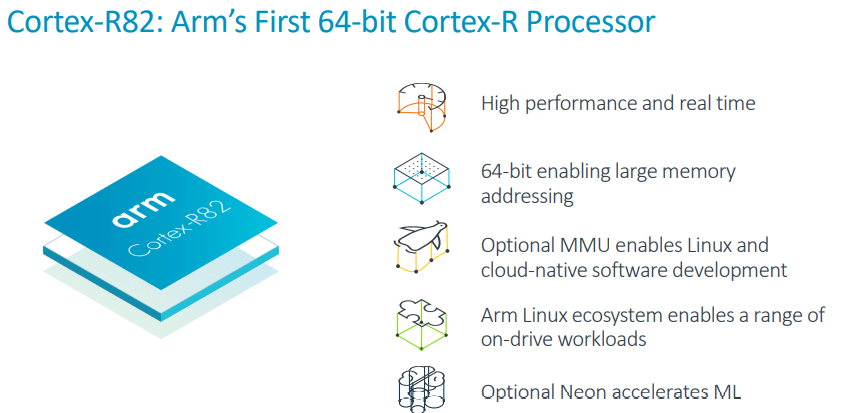Today, the Arm company announced the Arm Cortex-R82. The Cortex-R82 will be Arm’s first 64-bit, Linux-capable Cortex-R processor and will join several other already existing Cortex-R processors. This is said to be the company’s first Cortex-R processors to implement the Armv8-R AArch64 architecture. Arm was founded in 1990. The Japanese conglomerate SoftBank Group is the current owner of Arm, but the company’s headquarters are in Cambridge, United Kingdom. As the company name suggests, they make ARM (Advanced RISC Machine as opposed to Intel’ x86 architecture) CPUs. In addition to CPUs, the company also produces other kinds of chips and software development tools.
Today, the Arm company announced the Arm Cortex-R82. The Cortex-R82 will be Arm’s first 64-bit, Linux-capable Cortex-R processor and will join several other already existing Cortex-R processors. This is said to be the company’s first Cortex-R processors to implement the Armv8-R AArch64 architecture. Arm was founded in 1990. The Japanese conglomerate SoftBank Group is the current owner of Arm, but the company’s headquarters are in Cambridge, United Kingdom. As the company name suggests, they make ARM (Advanced RISC Machine as opposed to Intel’ x86 architecture) CPUs. In addition to CPUs, the company also produces other kinds of chips and software development tools.
Since this is the first time Arm has said anything about the Cortex-R82, we know relatively little about it. According to the company, the new processor will have full 64-bit support and be able to use up to 1TB of DRAM. Arm plans to offer an optional memory management unit (MMU) with the processor that they expect customers will use to run operating systems directly on the chip. This would be a significant help in keeping the size of devices and products using the chip down while still offering a complex feature set to end-users. Specifically, Arm’s announcement said that the new processor would provide full support for Linux. Unfortunately, the company did not specify which Linux flavors would be supported, so we can only speculate that the supported operating systems will be similar to other processors Arm has produced.
Arm intends to support linking up to 8 of the small processors together to allow for tackling larger volumes of data. The company appears to view the ability to connect the processors together as being primarily useful for edge computing, where it will allow relatively small devices to analyze data in addition to gathering it.
Engage with StorageReview
Newsletter | YouTube | Podcast iTunes/Spotify | Instagram | Twitter | Facebook | RSS Feed

